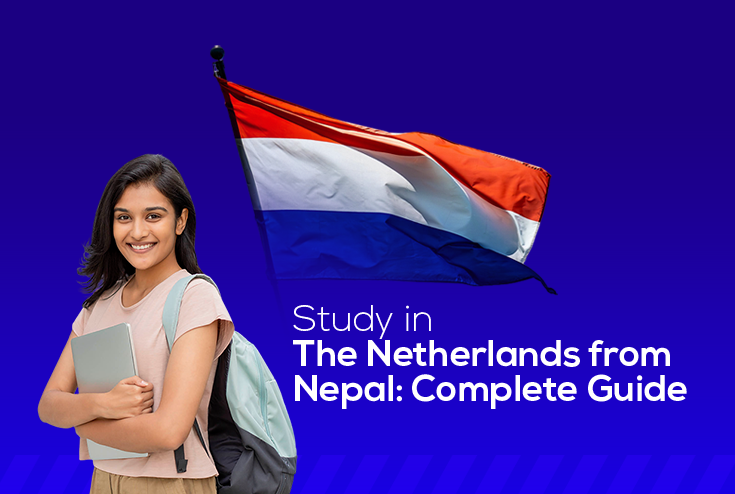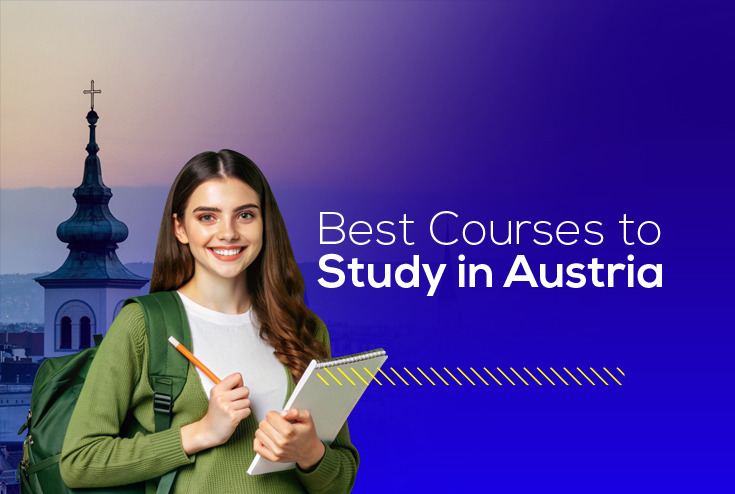
PhD in USA for Nepalese Students
Pursuing a PhD in the United States is a dream for many Nepali students. With world-class universities, cutting-edge research facilities, and immense academic freedom, the USA remains one of the top destinations for doctoral studies. This guide is designed to help Nepali students understand the entire journey from planning and application to graduation and career opportunities in 2025.
Table of Contents
PhD in USA for Nepali Students
- Introduction
- Studying PhD in USA from Nepal
- Types of PhD in USA
- Popular Study Fields for PhD Among Nepali Students
- Admission Requirements of PhD in USA for International Students
- Documents Required for PhD Application in USA from Nepal
- Costs and Scholarships for PhD Degree in USA
- Total Cost of Studying PhD in USA
- PhD Scholarships and Funding Aids in US for Nepali Students
- How to Apply for the PhD in USA from Nepal
- Visa Application Guide for PhD from Nepal (F1 Visa)
- Tips for a Successful PhD Journey
- Post PhD Opportunities in the USA for International Students
- Academic Careers Postdoctoral Researcher (Postdoc)
- Industry & Applied Research Jobs
- Entrepreneurship & Startups
- Work Visa Options After PhD
- Conclusion
- FAQs - PhD in USA for Nepali Students
Studying PhD in USA from Nepal
Choosing the right country for doctoral studies is one of the most important decisions in one’s academic life. The United States continues to be the most sought-after destination for PhD aspirants globally and Nepali students are no exception. Here’s why:
1. Home to the World’s Best Universities
The USA dominates global university rankings:
- QS World University Rankings 2025: Over 50 US universities are in the top 200.
- Prestigious institutions like MIT, Harvard, Stanford, UC Berkeley, and Caltech are pioneers in research and innovation.
- These universities have cutting-edge research labs, top-tier faculty (including Nobel laureates), and global recognition that opens doors everywhere.
2. Full Funding Opportunities
Unlike many other countries, most PhD students in the USA receive full funding: Research Assistantships (RA) and Teaching Assistantships (TA) that cover full tuition and provide monthly stipends. Fellowships and grants are available from universities, governments, and private foundations. This significantly reduces the financial burden on students and their families in Nepal.
3. Strong Research Ecosystem
The USA invests billions in research annually—over $700 billion in R&D in 2024. Research spans in all disciplines: from quantum computing, climate change, and AI to public health, economics, and social justice. PhD students are often involved in interdisciplinary, collaborative, and international projects. The students will get access to high-tech labs, digital libraries, datasets, and grants that are often unavailable in Nepal or other countries.
4. International Recognition and Career Advantage
A US PhD is recognized and respected worldwide by universities, industries, and governments. Many top researchers, CEOs, and world leaders are US PhD graduates. It will significantly enhance the applicant’s employability in sectors such as:
- Academia (universities, colleges)
- Global corporations (tech, pharma, finance, etc.)
- NGOs and INGOs (UN, WHO, World Bank)
- Government policy and research institutions
5. Flexible and Student-Centric Education System
The students get to choose their research topic, courses, and advisor. They can switch labs or even fields within the same university. Emphasis is on critical thinking, problem-solving, and independent research skills which are crucial for future leadership roles.
6. Cultural Diversity and Global Exposure
US universities are melting pots of culture, with students from over 150 countries. The students will build a global professional network, collaborate with diverse peers, and broaden their worldview. Nepali student communities and cultural organizations are active in most universities, helping them to stay connected to their roots while adapting to new environments.
7. Pathways to Stay and Work Legally
After graduation, the students are eligible for Optional Practical Training (OPT) for up to 3 years (for STEM). They can then transition to an H-1B work visa and even pursue permanent residency if desired. These options provide stability and long-term career planning, especially valuable for Nepali students seeking global exposure.
8. Exposure to Innovation and Entrepreneurship
The USA is home to Silicon Valley, Boston’s biotech corridor, and other innovation hubs. Many PhD graduates go on to launch startups, join tech giants, or contribute to cutting-edge research. University incubators and funding bodies (like NSF and NIH) often support student-led ventures.
9. Support Systems for International Students
- International Student Offices help the students with visas, housing, and legal issues.
- Universities offer counseling, academic support, peer mentorship, and career services.
- Student health services and insurance are typically included in the funding package.
- Most institutions have a Nepali Students Association or South Asian Student Union.
10. Opportunity to Contribute to Nepal’s Development
Many Nepali PhD graduates return to become professors, policy advisors, or development experts. They’ll bring back advanced research skills, global networks, and innovative ideas to contribute to Nepal's progress in science, education, governance, and industry. Even if they stay abroad, they can collaborate with Nepali institutions through joint projects, conferences, and remote teaching for Nepal’s development initiatives.
Types of PhD in USA
The term PhD (Doctor of Philosophy) in the United States encompasses a wide range of doctoral programs across various disciplines. However, not all PhDs are structured or focused in the same way. Based on field, structure, and intent, PhD programs in the USA can be categorized into the following types:
|
Type |
Duration |
Funding |
Ideal For |
Outcomes |
|---|---|---|---|---|
|
Academic Research PhD |
5-6 Years |
Mostly Funded |
Scholars, Professors |
Academia, Think tanks |
|
Professional PhD |
4-6 Years |
Often Funded |
Practitioners, Consultants |
Industry, Policy roles |
|
Interdisciplinary PhD |
6-8 Years |
Varies |
Innovators, Changemakers |
Research, NGOs |
|
Joint PhD |
6-8 Years |
Varies |
Dual Career Students |
Academia professional fields |
|
STEM PhD |
5-6 Years |
Heavily Funded |
Scientists, Engineers |
Academia, Tech, R&D |
Popular Study Fields for PhD Among Nepali Students
- STEM (Science, Technology, Engineering, Mathematics)
- Education and Social Sciences
- Public Health and Medicine
- Business and Management
- Environmental Studies
- Economics and Development Studies
Admission Requirements of PhD in USA for International Students
Most US universities require:
- A recognized Bachelor’s or Master’s degree
- Strong academic record (usually GPA 3.0+ out of 4.0)
- GRE scores (requirement varies by program)
- English proficiency: TOEFL iBT (80+) or IELTS (6.5+)
- University-specific requirements (if applicable)
Documents Required for PhD Application in USA from Nepal
In order to process your application for the PhD degree in USA, you’ll need to send these following documents to the university before the application deadline:
- Academic Transcripts and Certificates
- Equivalence Certificate from TU or Curriculum Development Center (If your degree is from foreign-affiliated universities) *Optional
- Passport Copy
- Financial Documents (if required)
- Language Proficiency Test Scores (IELTS / TOEFL)
- Standardized Test Scores (GMAT / GRE)
- Statement of Purpose
- Research Proposal
- Letters of Recommendation (3 Preferred)
- Writing Sample (if required)
- Application Fee (varies as per the university)
Costs and Scholarships for PhD Degree in USA
A PhD in the USA can be a significant financial commitment - but it also comes with substantial funding opportunities. Most international PhD students, including those from Nepal, do not pay full tuition out-of-pocket, thanks to assistantships, fellowships, and scholarships.
Let’s explore both the cost breakdown and available funding options in detail:
Total Cost of Studying PhD in USA
If you’re pursuing the PhD program without any funding, here is what it might cost you annually:
|
Categories |
Estimated Annual Cost (USD ) |
|---|---|
|
Tuition and Fees |
20,000 - 60,000 |
|
Living Expenses |
10,000 - 20,000 |
|
Health Insurance |
1,500 - 2,500 |
|
Books and Supplies |
1,000 - 2,000 |
|
Miscellaneous |
1,000 - 2,000 |
PhD Scholarships and Funding Aids in US for Nepali Students
Fortunately, most PhD programs in the U.S. are fully funded, especially in STEM, education, economics, and social sciences. Some of the most common funding options for international students include:
a. Research Assistantship (RA)
- Work on research projects under a faculty member
- Covers tuition waiver and provides a monthly stipend
- Often tied to your dissertation topic
b. Teaching Assistantship (TA)
- Assist in teaching undergraduate classes, labs, or grading
- Covers tuition and pays a stipend
- Requires good English communication skills
c. University Fellowships
- Awarded based on academic merit or research potential
- No work required (unlike RA/TA)
- Can be full or partial
d. Graduate Assistantship (GA)
- Involves administrative or academic support work
- May include a mix of TA/RA-like duties
e. Tuition Waivers
- Some universities waive tuition fees for all admitted PhD students
- Especially common in public universities and STEM fields
How to Apply for the PhD in USA from Nepal
Step 1: Research
- Start 12-18 months before intended intake (Fall 2026 for most applicants)
- Shortlist universities based on:
- Ranking
- Faculty research interest
- Funding availability
- Acceptance rate
Step 2: Prepare for Tests
- GRE/TOEFL/IELTS (as required)
- Register early and prepare using online resources or test preparation centers
You may explore our test preparation classes here.
Step 3: Prepare Application Materials
- SOP, LORs, CV, Research proposal
Step 4: Submit Online Application
- Most universities use their own portal or platforms like ApplyWeb, Slate, or Common App
Step 5: Attend Interview (if applicable)
- Some programs invite shortlisted applicants for virtual interviews
Step 6: Await Offer and Respond
- Accept offer and request I-20 for visa application
Visa Application Guide for PhD from Nepal (F1 Visa)
After receiving admission and funding from a U.S. university, the next critical step is obtaining a student visa to enter and study in the United States. Most international PhD students, including those from Nepal, apply for the F-1 visa, the standard non-immigrant visa for academic study in the U.S.
Here’s a step-by-step breakdown of how the F-1 visa process works, including what you’ll need to prepare:
Step 1: Receive Your Form I-20 (Certificate of Eligibility)
Once you accept your PhD offer, the university will issue you a Form I-20, a crucial document that:
- Confirms your admission
- Lists your program start and end date
- States your SEVIS ID number
- Shows your funding details (assistantship, fellowship, or personal funding)
Step 2: Pay the SEVIS Fee (Form I-901)
Before scheduling your visa interview, you must pay the SEVIS (Student and Exchange Visitor Information System) fee, which supports the maintenance of your immigration record.
- Fee Amount: $350 (as of 2025)
- Access the website here.
- Save the payment receipt – you'll need it during your interview.
Step 3: Fill Out the DS-160 Form (Online Visa Application)
This is your official U.S. visa application form.
- Form link
- Requires your passport, photo, travel history, and academic details
- Be honest and double-check every detail
- Once submitted, you’ll get a DS-160 confirmation page with a barcode. Print it - you’ll need this at the embassy.
Step 4: Pay the Visa Application Fee
You must pay a non-refundable visa application fee before booking your appointment.
- Fee: $185 (as of 2025)
- Payment is made at Nepal Investment Mega Bank branches in Nepal or online.
- Keep your fee receipt safely—it's required for booking your visa appointment.
Step 5: Schedule Your Visa Appointment (Interview Booking)
- Use your DS-160 confirmation and fee receipt to book your interview in the U.S. Embassy in Kathmandu.
- Website here.
Step 6: Prepare Your Documents
Required Documents for F-1 PhD Visa Interview:
- Original I-20 form (signed by you and your DSO)
- Admission Letter
- Academic transcripts and certificates (SLC to Bachelor’s or Master's)
- Standardized test scores (GRE, TOEFL/IELTS) if applicable
- Funding letter (RA/TA/Fellowship)
- Bank statements (if partially self-funded)
- Sponsor letter (if applicable)
- Valid passport (at least 6 months beyond intended stay)
- DS-160 confirmation page
- Visa appointment confirmation
- SEVIS fee receipt
- Visa fee receipt
- Recent 2*2 photographs
- Research proposal
- CV/Resume (Optional)
- Proof of ties to Nepal (property, family, future plans - Optional)
TIP: Arrange everything neatly in a clear folder. Be organized - this shows confidence and clarity.
Step 7: Attend Your Visa Interview (at U.S. Embassy, Kathmandu)
The visa interview is the most crucial step. The visa officer will assess:
- Your academic intent
- Your funding reliability
- Your English language proficiency
- Your intention to return to Nepal (non-immigrant intent)
Common Questions Raised During Visa Interviews for PhD:
- Why did you choose this university?
- What will you research during your PhD?
- Who is funding your education?
- What will you do after your PhD?
- Do you plan to return to Nepal?
Step 8: Visa Decision and Passport Pickup
After your interview, the visa officer will either:
- Approve your visa (you’ll be informed verbally)
- Refuse temporarily (under 221g for document review)
- Deny (if you don’t prove your eligibility)
If approved: Your passport will be returned in 3–5 working days with a visa sticker through NIMB Durbarmarg or your preferred pickup point.
Step 9: Travel to the USA
You can enter the U.S. up to 30 days before the start date mentioned on your I-20.
Documents to Carry While Traveling:
- I-20 (original)
- F-1 Visa (in passport)
- Admission and funding letters
- SEVIS receipt
- Proof of accommodation or contact in the U.S.
- Copies of all academic and financial documents
At the U.S. airport, a CBP officer will check your documents and issue an I-94 Arrival Record.
Tips for a Successful PhD Journey
- Choose a research area you’re passionate about
- Communicate regularly with your advisor
- Balance coursework, research, and life
- Publish regularly
- Build a strong academic and professional network
Post PhD Opportunities in the USA for International Students
After earning your PhD in the U.S., a world of professional and academic opportunities opens up. These fall into three broad categories:
1. Academic Careers Postdoctoral Researcher (Postdoc)
- A common next step to deepen research skills and publish more work.
- Usually 2–3 years long.
- Tenure-Track Faculty Positions: Assistant Professor roles at universities or colleges. Involves teaching, research, and publication.
- Lecturer or Adjunct Professor: Teaching-focused roles, often part-time or contract-based.
Best for students aiming for long-term academic or research careers.
2. Industry & Applied Research Jobs
PhDs are highly valued in industry, especially in STEM and applied social science fields.
- Research Scientist / Data Scientist
- Machine Learning Engineer / AI Specialist
- Biotech/Pharma
- R&D Specialist
- Policy Analyst / Consultant
- Economist or Analyst in Finance, Energy, or Healthcare
Many large companies (Google, Amazon, Pfizer, Meta, McKinsey) actively recruit PhD scholars.
3. Entrepreneurship & Startups
- Many PhDs launch their own startups, especially in tech, biotech, or edtech sectors.
- U.S. universities offer incubators, startup grants, and innovation labs.
Ideal for students with entrepreneurial mindsets and problem-solving innovations.
Work Visa Options After PhD
- OPT (Optional Practical Training): Up to 12 months (36 months for STEM grads)
- H-1B Work Visa: Sponsored by employers; allows long-term employment
- Green Card (EB-2 NIW): Many PhDs qualify for this through the National Interest Waiver
Conclusion
Pursuing a PhD in the USA is a transformative experience that demands dedication, planning, and resilience. For Nepali students, it offers not just academic and professional growth, but also the opportunity to contribute to global knowledge and innovation. With the right preparation and mindset, your PhD journey in the USA can be a milestone in your life and career.
Also Read:
How to Apply for US Student Visa from Nepal
Best Courses to Study in USA in 2025
FAQs - PhD in USA for Nepali Students
1. Can I apply for a PhD in the USA directly after a Bachelor’s degree?
Yes, many universities accept students for PhD directly after a 4-year Bachelor’s degree.
2. Is GRE required for all PhD programs?
No. Many universities have made it optional post-pandemic. You may check specific program requirements offered by your preferred university.
3. Can I bring dependents (spouse/children)?
Yes, you can bring dependents in the US on an F-2 visa. They are also required to appear for the visa interview.
4. What is the success rate of PhD visa interviews?
The visa success rate of PhD is generally high compared to other education levels. However, you must be able to demonstrate that your documents are genuine and intentions are clear.
5. How long does a PhD take in the USA?
The PhD degree in the USA typically takes around 4 - 6 years depending on your study field and research progress.
6. Can I study for a PhD in the USA for free?
Yes, you can. Most of the PhD programs offered by the US universities are fully funded, covering the tuition and providing a monthly stipend to manage other miscellaneous expenses. However, getting accepted for the PhD is a bit tough, so make sure to arrange the necessary documents and go through a thorough research before applying.
7. How much GPA is required for a PhD in the USA?
A GPA over 3.0 is generally preferred for getting accepted for a PhD program. This varies as per your course and university. Due to the high competition among the applicants, we suggest a minimum GPA of 3.5 for serious contention, especially at top schools.





Get Guidance